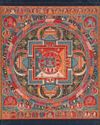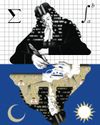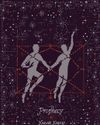
In 1941, Jorge Luis Borges published “The Garden of Forking Paths,” a short story in which a spy travels to the home of an English scholar. There they discuss an odd book by the spy’s great-grandfather, Ts’ui Pên. Rather than follow a single plot, the book aims to explore countless storylines. “In all fictional works, each time a man is confronted with several alternatives he chooses one and eliminates the others,” the scholar says. “In the fiction of the almost inextricable Ts’ui Pên he chooses—simultaneously—all of them. He creates, in this way, diverse futures, diverse times which themselves also proliferate and fork.”
Borges devoted most of his story to explaining the complicated idea that many different realities can coexist in a mazelike web of timelines. “This network of times which approached one another, forked, broke off, or were unaware of one another for centuries, embraces all possibilities of time,” the scholar goes on. “We do not exist in the majority of these times; in some you exist, and not I; in others I, and not you; in others, both of us.” The story invites the reader to imagine what else, other than the world we know, might be possible. But the spy ultimately wonders whether, if everything that can happen does happen, any choice is really worth making.
Denne historien er fra November 07, 2022-utgaven av The New Yorker.
Start din 7-dagers gratis prøveperiode på Magzter GOLD for å få tilgang til tusenvis av utvalgte premiumhistorier og 9000+ magasiner og aviser.
Allerede abonnent ? Logg på
Denne historien er fra November 07, 2022-utgaven av The New Yorker.
Start din 7-dagers gratis prøveperiode på Magzter GOLD for å få tilgang til tusenvis av utvalgte premiumhistorier og 9000+ magasiner og aviser.
Allerede abonnent? Logg på

MEAN TIME
“Hard Truths.”

ENLIGHTEN ME
The secret beauty of mandalas.

THE BEST OF THEM
His was a genius for the ages. Will Gottfried Leibniz ever get his due?

DEATH CULT
Yukio Mishima’ tortured obsessions were his making—and his unmaking.

Prophecy
The night of Dev’s twenty-second birthday, he was invited to sit with the elders after dinner.

A TALE OF TWO DISTRICTS
Lauren Boebert and Colorado’s red-blue divide.

THE TIKTOK TRAIL
Andean migrants draw others to the U.S. with videos depicting themselves as living the American Dream.

LOVE AND THEFT
Did a best-selling romantasy novelist steal another writer's story?

OUR NEW TWO-FACTOR AUTHENTICATION SYSTEM
Our two-factor authentication system is expanding because text messages and e-mailed codes are becoming less secure. Also, we’re committed to making sure your log-in process is more of a hassle than it needs to be.

STILL PROCESSING
Why is the American diet so deadly?